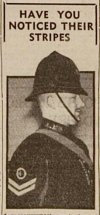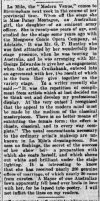Time Traveller 66
master brummie
A true gentleman . Long may it continue.No but I do read them to her on occasion. After almost 56 years I try to be measured and prudent
A true gentleman . Long may it continue.No but I do read them to her on occasion. After almost 56 years I try to be measured and prudent
We have had cats that have jumped onto the bonnet, I think it's the heat from the engine that attracts them.
Thank you!A true gentleman . Long may it continue.
It's a pleasure.Thank you!

That’s an interesting photo. I am wondering how that bus got onto or how it intended getting off Bridgnorth Hight Street with the low archway at the north end.Not a good picture, and not of Birmingham. Did Midland Red run a service to Bridgnorth ?
“The traffic at Bridgnorth does go through this tunnel under the Town Hall, but not traffic as tall as a double decker bus.”
(Nov 1940, Evening Despatch)
View attachment 199880


